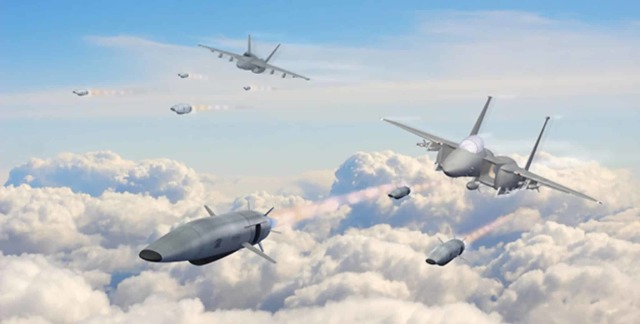The US military-industrial company Raytheon will create a working version of a rotating detonation engine without moving parts called Gambit. The Pentagon is going to equip cruise missiles designed for fourth-generation fighters like Grumman F-14 Tomcat and General Dynamics F-16 Fighting Falcon with this type of engines.
Often, so-called gas turbine engines are used in aviation equipment, such as helicopters, airplanes, drones, cruise missiles. However, such installations have a number of disadvantages:
— They consist of many movable elements, the assembly and maintenance of which is very expensive;
— These installations require "exotic" heat-resistant materials, as well as special cooling systems for the most high-temperature parts. In order for the engine to give high efficiency, the initial gas temperature in front of the turbine should be 550 degrees Celsius or higher. This temperature must be able to "tame", which can create certain difficulties in the development of such installations;
— Gas turbine engines are heavy and expensive.
It's one thing when this installation is on an airplane that can fly for several years. Another is when such an engine is put on a cruise missile designed for one—time use; it limits the range of its flight.
Recently, rotating detonation engines have been considered as an alternative to gas turbine engines . They provide a looped combustion chamber located between two cylinders located one inside the other. In this chamber, thrust is generated by means of a shock wave held in an infinite loop.
Gaseous fuel and oxidizer are fed into the chamber through the nozzles, then they are ignited. The first detonation occurs, as a result of which a supersonic shock wave is emitted, which passes through the looped combustion chamber. After making one turn and returning to the injectors, it ignites the next batch of fuel and oxidizer: the explosion creates another supersonic wave, then another and another. As a result of a series of explosions, traction appears.
This type of engine has a number of advantages:
— These installations are simple in design, as they are devoid of moving parts;
— They are light and compact;
— Their production is much cheaper than the production of gas turbine engines;
— They are difficult to disable;
— "Exotic" materials are not required for their production;
— The rotating detonation engine can be used in tandem with a jet or gas turbine. It is only necessary to create a prototype.
The idea of rotating detonation engines appeared in the middle of the XX century. To date, only their experimental models have been developed. The USA, Australia, and Russia are engaged in the creation of these installations.
The other day it became known that the Office of Advanced Research Projects of the US Department of Defense DARPA signed a contract with the military-industrial company Raytheon to create a working version of an air rotating detonation engine called Gambit. It will have no movable elements and will be able to provide higher efficiency than conventional rocket engines.
"First we have to design the engine, then build a prototype and test it until a full—fledged working version is developed," the US military industrial company said in a press release.
In the future, Gambit is planned to be used on cruise missiles designed for fourth-generation fighters. Raytheon noted that the new installation will be able to significantly increase the speed and range of cruise missiles compared to current systems. As a result, Raytheon plans to become the first company in the world to be able to create a full-fledged working version of a rotating detonation engine.

